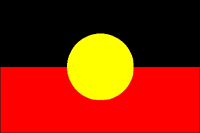Community events
Example indicator set - community events
There are a diverse range of community events that occur as a means of introducing or highlighting gender inequality and its connection to violence against women. Community events are a good approach for increasing awareness, enhancing buy-in or reinforcing commitment to existing gender equity work.
During community events it can be difficult to measure outcomes, particularly if these events are one off. Campaigns might also involve a series of events. Example campaigns include:
- International Women's Day (8th March)
- Week Without Violence (15th - 21st October)
- 16 Days of Activism against Gender-Based Violence (25th November to the 10th December)
- International Day for the Elimination of Violence against Women (25th November)
While some of the indicators in this section align with the National Community Attitudes toward Violence against Women Survey (NCAS) it is not expected that attitudes will shift in the short timeframe of an event, therefore these indicators have not been included here but are on our Example indicator set - Community projects (general) for longer term work.
If you have a registration process for your event this is a good opportunity to differentiate between new participants (never come across a topic or event like this before) versus participants who have had previous exposure to events or campaigns by including a couple of simple questions.
Example process indicators
-
# of community events
-
# of community members engaged in the event
-
# of community members new to the topic of gender equity or preventing violence against women (as opposed to # of community members who have come to these types of events before - this helps to understand if the reach of your event(s) is changing)
-
gender composition of participants (use event registration software to collect)
-
# of community groups/members involved in planning, leading or co-designing the community event
-
# of community members satisfied with being part of the community event/feel the event was time well spent
-
# of community members that felt the event was relevant for them
-
# of community members who expressed resistance and/or backlash during the event (practice lessons)
Example impact indicators
As a result of the event:
-
# of participants that are aware that violence against women is a serious and prevalent issue
-
# of participants that are aware/ became aware of the link between gender equity and preventing violence against women
-
# of participants that are aware of what '(gendered) norms' are and how they influence health outcomes
-
# of participants that have an awareness of the gendered drivers of violence against women
-
# of participants that have an increased understanding of the consequences of rigid gender roles or stereotypes (if there is a series of events)
-
# of participants that have an awareness of resources available to support/progress gender equity work
-
# of participants that express a strengthened resolve or commitment to talk about gender inequality in their daily lives


